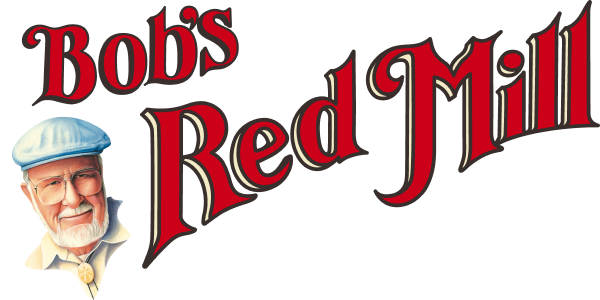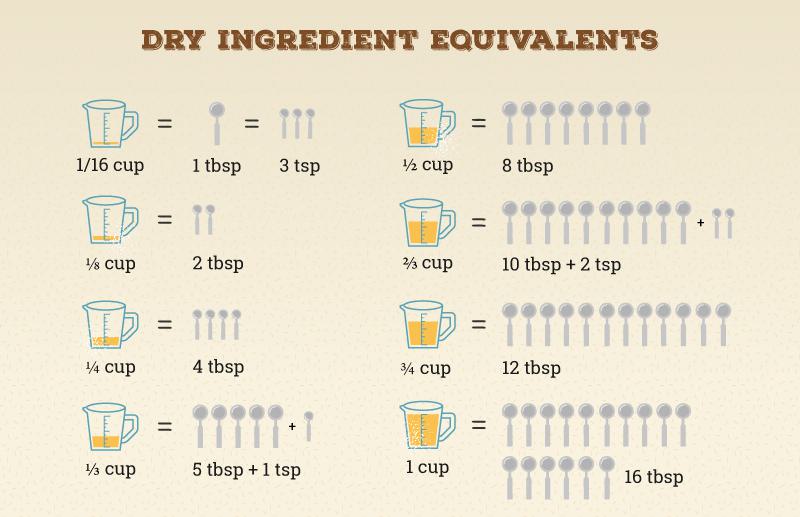


 Baking seems to be a mix of magic, precision, and science, and once you get over the hurdle of making accurate baking measurements, it can give way to a lot of creativity and color in the kitchen, too.
Many folks say that baking stresses them out. And we get that! Weve all been there before when that birthday cake refuses to rise, or those cookies come out of the oven as flat blobs. Well, ingredients that are measured correctly can literally make the difference between a perfect baked good and a disappointing mess! Luckily, weve compiled our favorite tips for stress-free measurements, as well as notes on proper baking measurement techniques for ingredients like flour and sugar.
Whether youre concocting a big batch of holiday cookies or a dozen anniversary cupcakes for someone special, no need to fear! The Bobs Red Mill baking measurements guide is here.
Baking seems to be a mix of magic, precision, and science, and once you get over the hurdle of making accurate baking measurements, it can give way to a lot of creativity and color in the kitchen, too.
Many folks say that baking stresses them out. And we get that! Weve all been there before when that birthday cake refuses to rise, or those cookies come out of the oven as flat blobs. Well, ingredients that are measured correctly can literally make the difference between a perfect baked good and a disappointing mess! Luckily, weve compiled our favorite tips for stress-free measurements, as well as notes on proper baking measurement techniques for ingredients like flour and sugar.
Whether youre concocting a big batch of holiday cookies or a dozen anniversary cupcakes for someone special, no need to fear! The Bobs Red Mill baking measurements guide is here.


 8 fluid ounces = 1 cup = 1/2 pint
16 fluid ounces = 2 cups = 1 pint
32 fluid ounces = 4 cups = 2 pints = 1 quart
64 fluid ounces = 8 cups = 4 pints = 2 quarts
128 fluid ounces = 4 quarts = 1 gallon
8 fluid ounces = 1 cup = 1/2 pint
16 fluid ounces = 2 cups = 1 pint
32 fluid ounces = 4 cups = 2 pints = 1 quart
64 fluid ounces = 8 cups = 4 pints = 2 quarts
128 fluid ounces = 4 quarts = 1 gallon
 Or you can do as our friend Sally from Sallys Baking Addiction likes to do and measure by weight. As she notes, some may say this is a waste of time, but its how she goes about getting the exact results she wants. A cup isnt always a cup, she says, but a gram/ounce is always a gram/ounce.
Here is the food scale she uses for common ingredients:
1 cup all purpose flour = 125 grams (4 1/2 ounces)
1 cup sifted all purpose flour = 115 grams (4 ounces)
1 cup bread flour = 130 grams (4 1/2 ounces)
1 cup sifted bread flour = 121 grams (4 1/4 ounces)
1 cup (packed) brown sugar = 200 grams (7 1/2 ounces)
1/2 cup butter = 1 stick = 115 grams (4 ounces)
1 cup cake flour = 115 grams (4 ounces)
1 cup sifted cake flour = 100 grams (3 1/2 ounces)
1 cup chocolate chips = 180 grams (6 1/4 ounces)
1/2 cup natural unsweetened cocoa powder = 41 grams (1.6 ounces)
1 cup confectioners sugar = 120 grams (4 1/4 ounces)
1 cup sifted confectioners sugar = 115 grams (4 ounces)
1/4 cup cornstarch = 28 grams (1 ounce)
1 cup granulated sugar = 200 grams (7 1/2 ounces)
1 Tablespoon honey = 21 grams (3/4 ounce)
1/2 cup maple syrup = 156 grams (5 1/2 ounces)
1 cup milk = 227 grams (240 ml; 8 ounces)
1/4 cup molasses = 85 grams (3 ounces)
1 cup oats = 95 grams (3 ounces)
1/2 cup peanut butter = 135 grams (4 3/4 ounces)
1 cup sour cream or yogurt = 227 grams (8 ounces)
1 cup whole wheat flour = 113 grams (4 ounces)
So, now that youve built up your confidence and are a baking measurement pro, it's time to get in the kitchen and start baking!
Try something like this Seasonal Fruit Galette if you're looking for a dessert fit for a dinner party or summer gathering. Its a no-fuss treat that guests can serve themselves.
If youre looking for a versatile baked good to top with butter and jam or to fill with breakfast ingredients like bacon and sausage, try experimenting with these Homemade Whole Wheat Buttermilk Biscuits.
This Chocolate Aai Icebox Cake is rich and subtly sweet with a creamy macadamia nut frosting, perfect for a special occasion or intimate gathering.
These Lemon Blueberry Cupcakes are bright and bursting with fresh berries, the ideal baked good to experiment with when youre looking to create something refreshing and not-too-sweet with a light frosting.
Or, you can always opt for a classic, like BabyCakes NYC Chocolate Chip Cookies, the best blend of all the wholesome baking ingredients we swoon over.
Whether youre creating cookies, cake, or every baked good in between, we hope this baking guide has inspired you to create!
What are your favorite tricks for getting those perfect baked goods time and time again? Share them with us in the comments below!
Or you can do as our friend Sally from Sallys Baking Addiction likes to do and measure by weight. As she notes, some may say this is a waste of time, but its how she goes about getting the exact results she wants. A cup isnt always a cup, she says, but a gram/ounce is always a gram/ounce.
Here is the food scale she uses for common ingredients:
1 cup all purpose flour = 125 grams (4 1/2 ounces)
1 cup sifted all purpose flour = 115 grams (4 ounces)
1 cup bread flour = 130 grams (4 1/2 ounces)
1 cup sifted bread flour = 121 grams (4 1/4 ounces)
1 cup (packed) brown sugar = 200 grams (7 1/2 ounces)
1/2 cup butter = 1 stick = 115 grams (4 ounces)
1 cup cake flour = 115 grams (4 ounces)
1 cup sifted cake flour = 100 grams (3 1/2 ounces)
1 cup chocolate chips = 180 grams (6 1/4 ounces)
1/2 cup natural unsweetened cocoa powder = 41 grams (1.6 ounces)
1 cup confectioners sugar = 120 grams (4 1/4 ounces)
1 cup sifted confectioners sugar = 115 grams (4 ounces)
1/4 cup cornstarch = 28 grams (1 ounce)
1 cup granulated sugar = 200 grams (7 1/2 ounces)
1 Tablespoon honey = 21 grams (3/4 ounce)
1/2 cup maple syrup = 156 grams (5 1/2 ounces)
1 cup milk = 227 grams (240 ml; 8 ounces)
1/4 cup molasses = 85 grams (3 ounces)
1 cup oats = 95 grams (3 ounces)
1/2 cup peanut butter = 135 grams (4 3/4 ounces)
1 cup sour cream or yogurt = 227 grams (8 ounces)
1 cup whole wheat flour = 113 grams (4 ounces)
So, now that youve built up your confidence and are a baking measurement pro, it's time to get in the kitchen and start baking!
Try something like this Seasonal Fruit Galette if you're looking for a dessert fit for a dinner party or summer gathering. Its a no-fuss treat that guests can serve themselves.
If youre looking for a versatile baked good to top with butter and jam or to fill with breakfast ingredients like bacon and sausage, try experimenting with these Homemade Whole Wheat Buttermilk Biscuits.
This Chocolate Aai Icebox Cake is rich and subtly sweet with a creamy macadamia nut frosting, perfect for a special occasion or intimate gathering.
These Lemon Blueberry Cupcakes are bright and bursting with fresh berries, the ideal baked good to experiment with when youre looking to create something refreshing and not-too-sweet with a light frosting.
Or, you can always opt for a classic, like BabyCakes NYC Chocolate Chip Cookies, the best blend of all the wholesome baking ingredients we swoon over.
Whether youre creating cookies, cake, or every baked good in between, we hope this baking guide has inspired you to create!
What are your favorite tricks for getting those perfect baked goods time and time again? Share them with us in the comments below!
